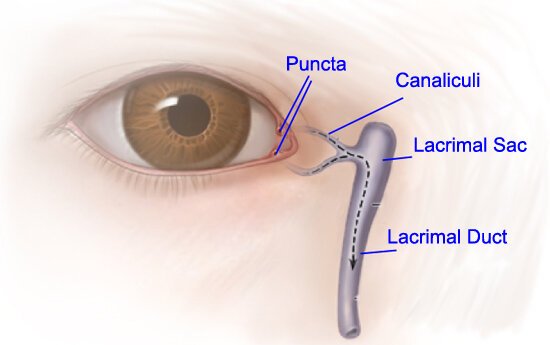Dry Eye: When to Plug
A CLOSER LOOK AT PUNCTAL PLUGS
For many dry eye sufferers, a lack of tear volume increases foreign body sensation, dryness, itchiness and light sensitivity. To increase the quantity of tears, many patients will use artificial tears which may evaporate quickly or roll down the cheek. So for many patients, punctal plugs may be a safe and simple solution.
Each eye has two punctums (one on each lid) near the nose. The punctum allows for tears to drain through the nasolacrimal duct. By occluding the inferior punctum with a plug, there will be less tear drainage and therefore more tears sitting on the surface of the eye.
Are looking to know more about Dry Eye Treatments? Click here to learn more
The plugs can be made of either collagen or silicone. Collagen plugs will dissolve naturally based on the type of collagen inserted. Some will provide occlusion for a week and others for a few months. The semi-permanent solution is to use silicone. This material will not dissolve but can be easily removed. The punctum size needs to accurately measured, so the plug fits perfectly.
Although plugs provide an easy solution for immediate relief, patients need to be carefully selected. Chronic dry eye leads to increased inflammation on the ocular surface and the eyelid margin and thus will need to be treated prior to occlusion. Ideally, the tear quality should be improved first so that once the punctum has been plugged, there will be an increase in the volume of good-quality tears.
For more information, please contact our office, located in Vancouver, to schedule your dry eye evaluation.


